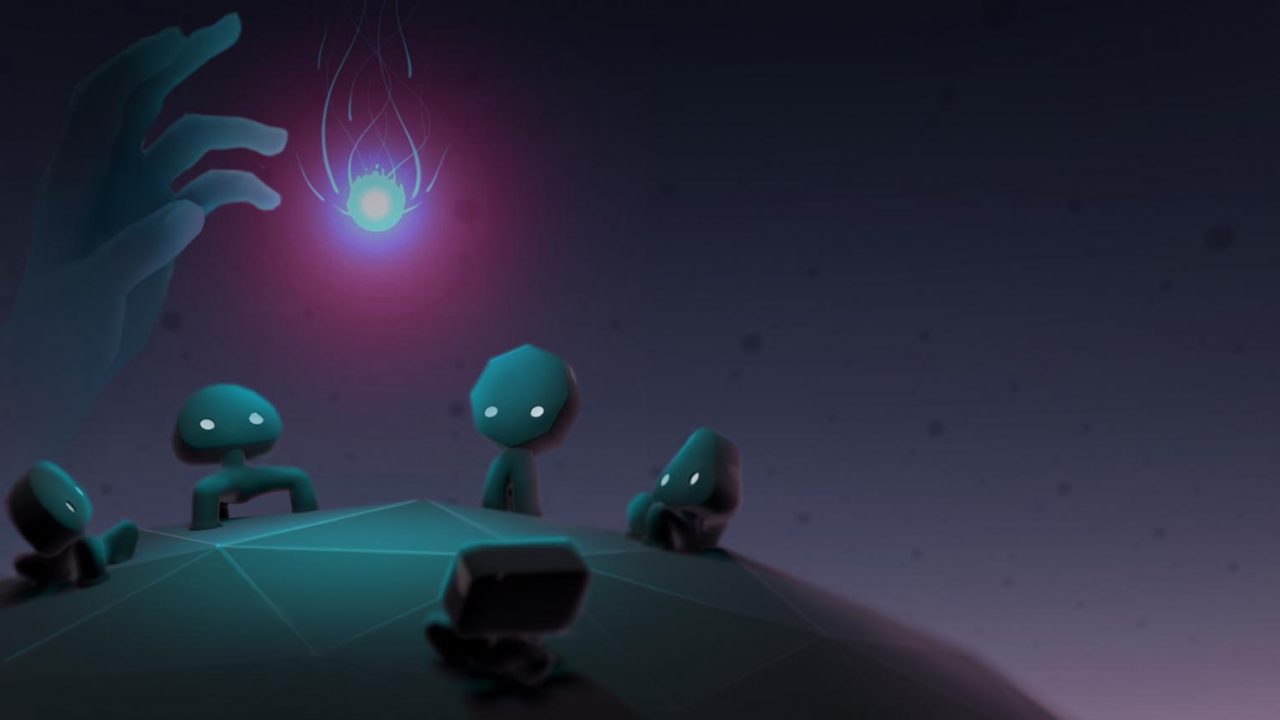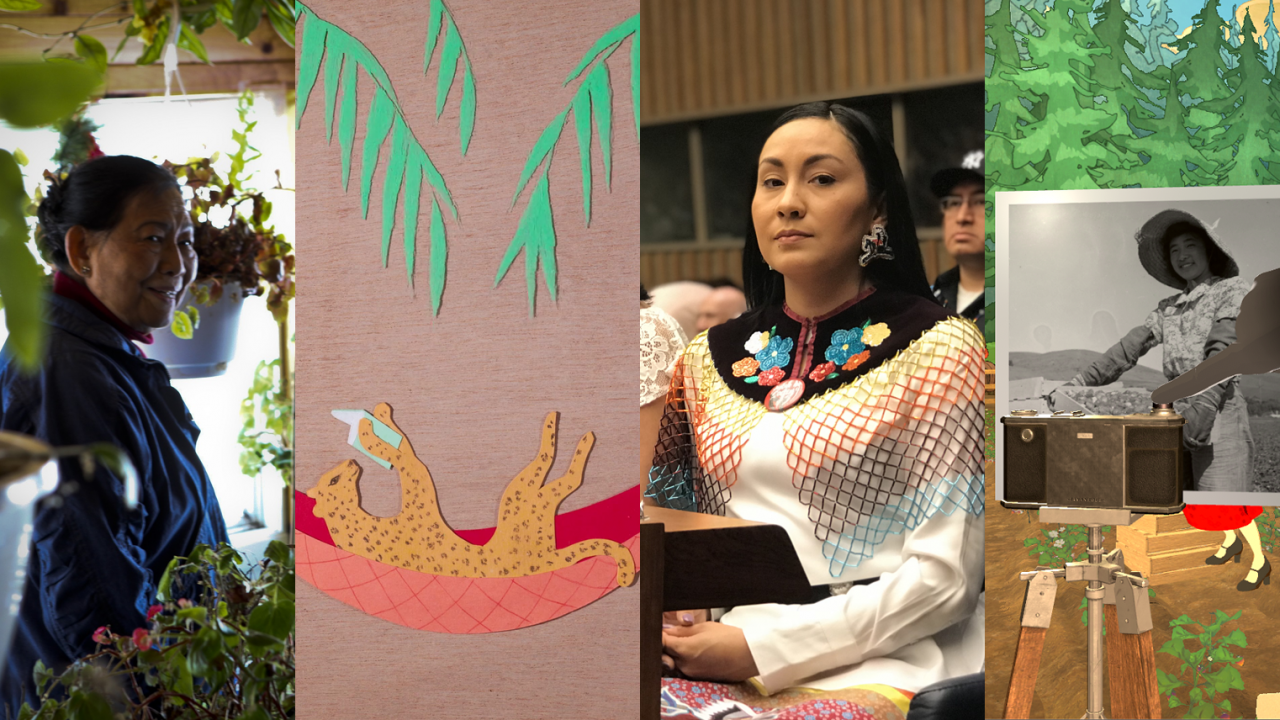
Agence: Redefining the Film Experience
Agence: Redefining the Film Experience
Motion pictures have come a long way since the invention of the kinetoscope. This monster of a device only allowed a single person to view a short silent film, often less than 30 seconds long, on a continuous loop. It was hardly a device that could fit in your pocket, and it seems laughable to us almost 130 years later. Imagine trying to explain to early film pioneers that we now carry hand-held devices that stream (“What’s stream?” you could almost hear them say) high-definition, colour moving images with a full range of dynamic sound—all seemingly from thin-air. Even more important than the technical advancements, we’d have to explain that these moving pictures now have the capacity to change perspectives and open our eyes to realities we didn’t even know existed through thoughtful, well-crafted narratives.
Now, in 2021, the NFB gives us Agence. A film, created by the NFB and Transitional Forms, that kick-starts an entirely new way of experiencing moving pictures by using artificial intelligence (AI) to tell the story. Just as the kinetoscope set the stage for the launch of the motion picture, could Agence be the catalyst for imagining the possibilities of the emerging genre called dynamic film?
As David Oppenheim, interactive producer with the National Film Board of Canada (NFB), explains,
“The NFB has been making films for over 80 years and interactive stories for the past 15 years, and as a public producer we have always experimented with technology in the service of storytelling, it’s part of our DNA. It seems perfectly natural to me that we’re now exploring what role artificial intelligence has in storytelling.”
Setting the Stage: What Is a Dynamic Film?
To better understand the concept of a dynamic film, we look to the creators of Agence to explain what sets it apart from our familiar cinematic experiences:
“A dynamic short-film that merges cinematic storytelling, artificial intelligence, and user interactivity, Agence is never the same twice. In this simulated universe, you have the power to observe or interfere with tiny AI creatures, called the ‘Agents,’ as they react to each other and their emerging world. Once you meet these little AI creatures, their story will never be the same.”
Agence is a dynamic film experience that brings the viewer into the story as an active participant, giving them power to manipulate the outcome of the film. The viewer takes the role of an Agent, a single character in the story. However, they do not have unrestrained control, but instead are given a set of parameters that limit the amount and type of control they have in the film.
Agence feels more like a video game at first. But a dynamic film is better appreciated if you understand it as a story built on a partnership consisting of a filmmaker, viewer and Agent. Viewers need to recognize that they take on both the role of observer and actor in this partnership. Making changes to the virtual world in the story is as much a part of the experience as observing what occurs because of the changes made.
In order for the role of the viewer to impact the outcome of the film, the Agents need to be able to respond in real time to the changes happening around them. AI is the backbone to the Agence experience, providing the conditions for the Agents’ responses when their virtual world changes. As the filmmakers set the scene for this interaction between viewer and AI to take place, Agence presents an interesting ethical dilemma for the viewer, and inevitably asks, Will you interfere?
A Dynamic Partnership in Storytelling

The storytelling partnership begins with the filmmaker (or “director” in the above graphic) constructing the virtual world of Agence. The director determines the parameters, or rules, that are foundational to both the existence of the virtual world and the ways the Agents can interact within that world.
The virtual world of Agence is built on a rotating sphere that creates an unfavorable environment for survival. The Agents are always in danger of falling off the world if they can’t find the delicate balance necessary for coexistence. To complement the Agents, the director also offers the viewer a role in the story as another Agent. The viewer is given a number of possible actions from the director that guide their interactions in manipulating the story.
The key to the viewer’s role in the film is their ability to choose their level of interference in the lives of the Agents. Viewers can take a passive stance, choosing not to interfere at all and simply watching the film play out, or they can take an active role and change the outcome dramatically. The most interesting option the viewer has in changing the outcome of the story is hidden in the menu of the film. Viewers are able to choose which Agents will have the ability to learn and adapt throughout the simulation, providing them with an autonomous brain. This seemingly small innovation can have dramatic effects on the story, leading to different outcomes with every view. Check out the behind-the-scenes video to dig deeper into how the Agents began to think for themselves.
The Story Behind Agence
The Future of Interactivity in Film
Since the creation of the kinetoscope, film has been a mostly passive experience, situating the viewer as the receiver, the filmmaker as the giver, and the characters as the medium in which this gift of artistry and storytelling is delivered. Dynamic films that use AI characters, such as Agence, redefine these roles, opening up opportunities for a different relationship between the viewer and the Agents in the film. Since both the audience and the AI technologies are ever changing, the film’s storyline will truly never be the same twice. As Pietro Gagliano, Agence’s creator, explains,
“We believe it marks a turning point for AI in entertainment. The older technology, the Game AI, is handing over the torch to these new creatures. Who, even though they’re very simple right now, can learn and evolve infinitely. We want our film to be a format or a stage where this transition can happen.”
Good luck explaining that to the film pioneers of the past.
If you’re an educator looking to use Agence with your students, we’ve provided a number of other resources to help you integrate the experience into your classroom. Check out both the Mini-Lesson for Agence and the Agence Classroom Quickstart Guide for support in using the experience in your class.
Jon Lewis is passionate about art and design and the role of technology in amplifying opportunities for student expression. He has been an Ontario educator for the past 15 years and currently works as a K–12 curriculum coordinator, supporting the use of digital platforms within a pedagogical context. Jon resides in Barrie, Ontario, and is active in promoting local arts as the co-founder of a community-based arts and educational space.
Pour lire cet article en français, cliquez ici.
Discover more Educational blog posts | Watch educational films on NFB Education | Subscribe to the NFB Education Newsletter | Follow NFB Education on Facebook | Follow NFB Education on Twitter | Follow NFB Education on Pinterest


